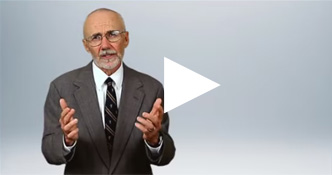Capacity Building for your Non-Profit: The Shift by Investors from Funding to Financing
by Harold J. Schultz, Ph.D.
This topic is so timely right now. With the economic downturn of the past several years, funders have been besieged for help by charities struggling to find sufficient revenue to carry out their mission. Their strategy recently has turned to capacity building—help the charity, through a capacity-building grant, to “grow” their own revenue streams and become less dependent on grantors to make up the shortfall in their operating budget. Such a focus forces the non-profit to put a mirror to their operation to see what they are doing well, where they can reduce cost centers and grow revenue centers and to show measurable outcomes for the time spent on your activities.
10 Steps and Strategies
Following are 10 steps and strategies that can work for you in building your organization’s fund-raising capacity:
1. Begin “at home” by looking hard at what you are now doing. Carry out an internal Development and Organizational Audit based on Peter Drucker’s criteria for successfully managing non-profits (“The Effective Executive” article).
- Do your own SWOT analysis; build on strengths
- Focus on results, not work
2. Determine priorities and posteriorities in your operation that wisely use and not just consume time in your fund raising day.
- Start each day and month with identifying priority tasks that outrank all other work and make a difference in advancing fund raising.
3. Match your mission with grant opportunities locally and nationally.
- Open doors with local funders through local connections
- Uncover new Foundation grant prospects through Internet search engines4
4. In what ways are you using or misusing technology?
- Make technology a servant, not a master
- Do an internal assessment of your organization’s technology needs and priorities
- Customize your data base (your future gold mine) to meet your need
5. Approach funders to jump start your capacity building effort
- Do your homework first. What is lacking to “grow” revenue? What outcomes will be forthcoming?
- Increase revenue centers; reduce cost centers (part of Business Plan)
- Role of outsourcing and consulting in capacity building
6. Assess cost centers versus revenue centers in your operation. Identify practical steps to reduce costs.
- Focus first on organization’s earned income potential
- Cost effectiveness of various fundraising strategies
- Budget line items as either cost centers or revenue centers: build revenue, cut costs
7. Train, educate and energize staff and Board members in successful fund raising, including entrepreneurial fundraising
- Think small—in building a team of volunteer fund raisers
- Think entrepreneurially—out of the box
- Look for opportunities, not difficulties
8. Develop a simple Business Plan that can be used as benchmarks in assessing your program’s success and also serve for submission to funders
- A Business Plan is more specific than a Strategic Plan
- Is the added work worth the return on investment (ROI)?
- Focus on measurable outcomes, results and benefits
9. Test possibilities for your organization to engage in public-private partnership
- Look at the current landscape
- Look at government funding shifts as the political agenda shifts
10. Out of the Box Opportunities to grow revenue streams
- Leverage or start a planned giving program (endowment) with incentive cash pledges for each estate gift committed
- Consider a Living Endowment program where donors can be major league supporters with a modest annual gift
Summary Reminders in Capacity Building
- Prove to funders and donors that your operation is lean, efficient and effective in budget building and in management of time and resources. Show stewardship and accountability.
- Think outside the box. What are strategies worth considering that are not replicated by your competitors for the charitable dollar?
- Gear your fundraising efforts to measurable results, to outcomes, not to work to be done.
- Set priorities (and posteriorities) in fundraising activities and stick with them.
“First things first and second things not at all.” (Peter Drucker)
Bill Moran, The Moran Company, specializes in nonprofit executive searches
for executive directors, fundraising staff and other top nonprofit leadership.
www.morancompany.com
© 2008 The Moran Company
“We find great nonprofit executives”
Posted in Fundraising Articles
Subscribe
Join more than 10,000 nonprofit professionals, community leaders and board members who receive e-mail updates from The Moran Company.






